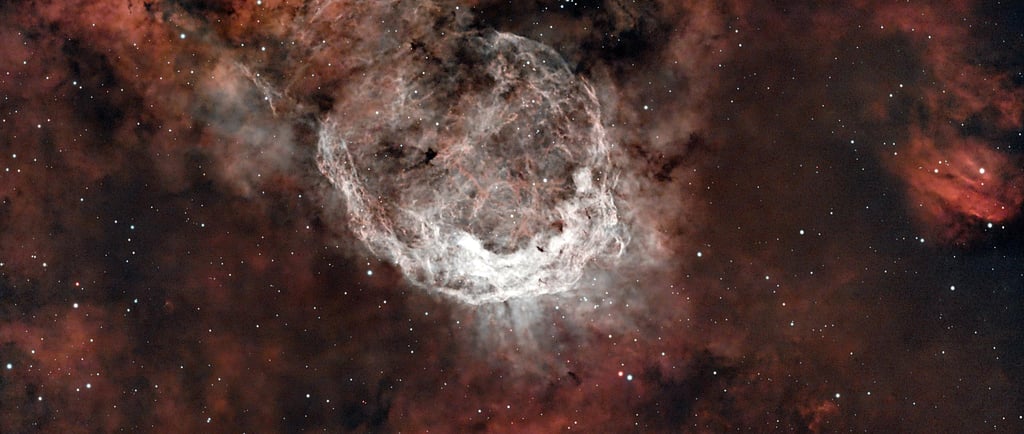NGC 3199: The Banana Nebula


Introduction to the Banana Nebula
The Banana Nebula, scientifically recognized as one of the most intriguing emission nebulae, is located roughly 12,000 light years away from Earth in the constellation Carina. This stunning celestial phenomenon is primarily known for its unique shape that resembles a banana, captivating astronomers and stargazers alike.
The Formation of the Banana Nebula
The Banana Nebula is a cosmic byproduct of the Wolf-Rayet star, specifically WR 18. These stars are renowned for their massive sizes and rapid stellar winds, which contribute significantly to the nebula's formation. As a Wolf-Rayet star reaches the later stages of its life, it begins to shed its outer layers at an extraordinary rate. This process results in the creation of the emission nebula, illuminating the surrounding space with vibrant colors and intriguing structures.
Characteristics of the Banana Nebula
One of the most distinguished features of the Banana Nebula is its coloration, which stems from the interaction of hot gases emitted by the Wolf-Rayet star. The nebula is a magnificent tapestry of blues, greens, and hints of reds, revealing the presence of various ionized elements. The intricate details captured in images of the nebula highlight its complex structure, punctuated by filaments and knots that provide insight into the dynamic processes driving its evolution.
The observability of the Banana Nebula is quite remarkable, making it a subject of fascination for both amateur astronomers and professionals. Observations conducted using advanced telescopes continue to unveil new details, expanding our knowledge of this cosmic entity.
The Importance of Studying Emission Nebulae
Studying emission nebulae like the Banana Nebula is crucial for understanding stellar evolution and the lifecycle of stars. Such nebulae serve as nurseries for new stars, as the materials expelled by aging stars contribute to the formation of new celestial bodies. The dynamic processes within nebulae also highlight the interactions between stars and their environments, providing valuable data for astronomers.
Additionally, emission nebulae allow scientists to probe the chemical composition and physical conditions of the interstellar medium. By deciphering these characteristics, researchers can gain insights into the broader cosmological narrative, including the origins of elements and the evolutionary journey of galaxies.
Conclusion
In summary, the Banana Nebula stands as a testament to the beauty and complexity of our universe. Located 12,000 light years away in the constellation Carina, this emission nebula is a spectacular result of a Wolf-Rayet star, WR 18. The captivating shape, radiant colors, and intricate structures of the Banana Nebula not only inspire awe but also enrich our understanding of stellar processes. Continued exploration and study of such nebulae will undoubtedly unveil even more mysteries of the cosmos.
